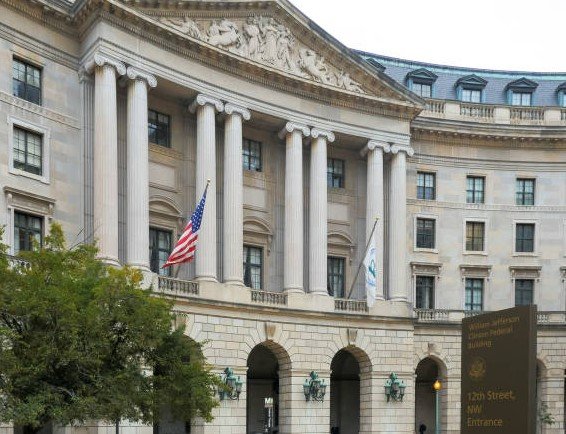The U.S. Environmental Protection Agency under the Trump administration plans to repeal a key 2009 rule that declares greenhouse gases a danger to public health, paving the way for fewer climate regulations. This move, announced in recent months, has sparked concerns among business leaders who fear it could lead to legal battles and inconsistent state rules.
What Is the Endangerment Finding?
The endangerment finding stems from a 2009 EPA decision that greenhouse gases like carbon dioxide and methane harm public health and welfare by driving climate change. This ruling has supported federal limits on emissions from vehicles, power plants, and other sources for over 15 years.
Experts say the science behind it has only strengthened since then. Rising global temperatures, more frequent extreme weather, and health issues from pollution have all added weight to the original conclusions. The finding has helped cut emissions, but critics argue it burdens industries with high costs.
Recent data from the National Oceanic and Atmospheric Administration shows that 2024 was the hottest year on record, with heat waves and wildfires linked to climate change causing billions in damages. Without this rule, federal oversight on such pollutants could vanish.

Why Business Leaders Are Raising Alarms
Many companies, including carmakers and energy firms, worry that scrapping the rule might create more problems than it solves. They point to potential lawsuits from states and cities seeking damages for climate impacts, which could tie up resources in court for years.
A patchwork of state regulations could also emerge, making it hard for national businesses to comply. For example, states like California might tighten their own emissions rules, while others relax them, leading to confusion and extra costs.
Here are some key concerns voiced by industry groups:
- Increased litigation risks from environmental lawsuits.
- Higher operational costs due to varying state laws.
- Loss of a stable federal framework that guides investments in clean technology.
Electric utilities and oil companies have even urged caution, saying a sudden repeal could disrupt markets. One executive from a major automaker noted that consistent rules help plan for the future, especially with the growing demand for electric vehicles.
In a letter from over 50 companies, organized by a nonprofit, leaders stressed that the change was not something they requested. They prefer predictable policies over uncertainty.
EPA’s Push for Repeal
EPA Administrator Lee Zeldin has led the charge, proposing the repeal in August 2025 as part of broader efforts to reduce regulations. The agency claims the 2009 finding has cost industries over $1 trillion in compliance, especially in vehicle emissions standards.
The proposal relies on a recent Energy Department report that questions the urgency of climate action. This report, prepared by skeptics selected by the administration, suggests that economic harms from regulations outweigh environmental benefits.
Public comments on the plan closed recently, with thousands of submissions. The EPA argues that repealing it would provide clarity and boost economic growth by easing burdens on manufacturers and energy producers.
However, the move aligns with President Trump’s promises to roll back Obama-era policies. It targets standards for light, medium, and heavy-duty vehicles, which could slow the shift to cleaner technologies.
Expert Views on the Science
Climate scientists strongly oppose the repeal, calling it a denial of established facts. A group of over 85 experts criticized the administration’s report for inaccuracies and misrepresenting data on warming trends.
One professor highlighted how evidence has grown: sea levels have risen about 8 inches since 1900, and heat-related deaths in the U.S. have increased by 20% in the last decade. Wildfires, fueled by drier conditions, burned over 7 million acres in 2024 alone.
The National Academies of Sciences has reviewed similar claims and found them lacking. They affirm that human activities, mainly fossil fuel use, are the main cause of recent warming.
Environmental groups vow to fight the repeal in court, arguing it ignores overwhelming scientific consensus. This could delay any changes for months or years.
Potential Impacts on Economy and Environment
If the repeal goes through, it could reshape industries. Vehicle emissions rules might end, potentially increasing pollution and health risks like respiratory diseases.
On the economic side, businesses fear a rush of state-level actions. For instance, blue states could impose stricter caps, while red states opt out, creating divides.
| Sector | Potential Changes | Business Concerns |
|---|---|---|
| Automotive | End of GHG standards for cars and trucks | Higher costs from state variations; litigation over past emissions |
| Energy | Relaxed power plant rules | Uncertainty in investments for renewables; lawsuits for climate damages |
| Manufacturing | Fewer federal mandates | Patchwork regulations complicating supply chains |
These shifts come amid global efforts to cut emissions, with the U.S. facing pressure from international partners. The 2025 United Nations climate talks could highlight any backsliding.
Consumers might see mixed effects: lower energy costs short-term, but higher risks from climate events like floods and storms, which cost the U.S. $150 billion in 2024.
Looking Ahead: What Happens Next?
The EPA aims to finalize the repeal by early 2026, but legal challenges are certain. Courts have upheld the endangerment finding in the past, based on Supreme Court precedents.
Business leaders hope for a balanced approach that avoids extremes. Some suggest revising rather than repealing the rule to address costs without ignoring science.
As this story develops, it raises questions about balancing economic growth with environmental protection. Readers, what do you think about the EPA’s plan? Share your thoughts in the comments and pass this article along to spark discussion.








